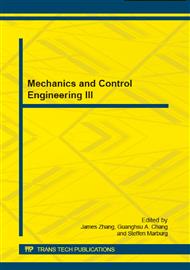p.32
p.39
p.48
p.58
p.63
p.70
p.79
p.85
p.93
Prediction of Spherical Phase Change Material Temperature Using RBFNN Model
Abstract:
PCM system particularly plays an important candidate at off peak to improve thermal storage system. In this paper, predication of output temperature in integrated solar heat using RBFNN was proposed. First, a brief PCM numerical model including geometrical and operational parameters and discusses the effect this parameter on the output temperature. The working fluid temperature is uniform distributed and equal to collector output temperature. The learning data is theoretical generated by using standard solar collector integrated with 95 PCM modules. The RBFNN model has 3 input nodes representing spherical size, duct length and number of ball and two output node represented by first and last layer PCM temperature. Simulation result shows the predicted PCM temperature at first and last layer closely match with the analytical data from CFD.
Info:
Periodical:
Pages:
63-69
Citation:
Online since:
December 2014
Keywords:
Price:
Сopyright:
© 2015 Trans Tech Publications Ltd. All Rights Reserved
Share:
Citation:


